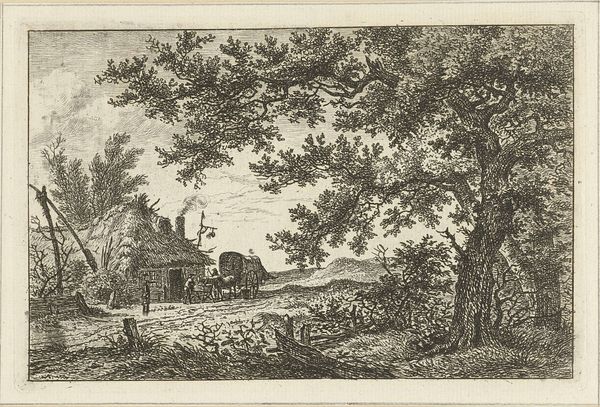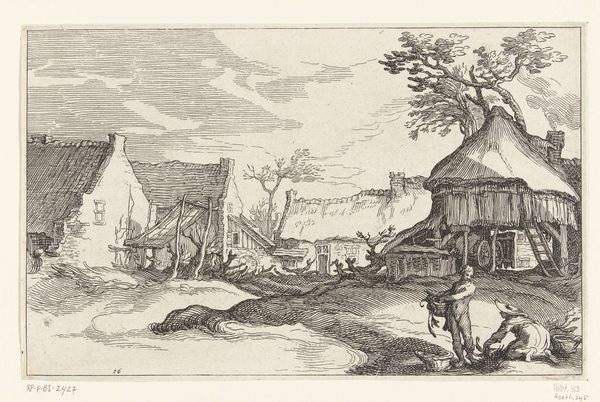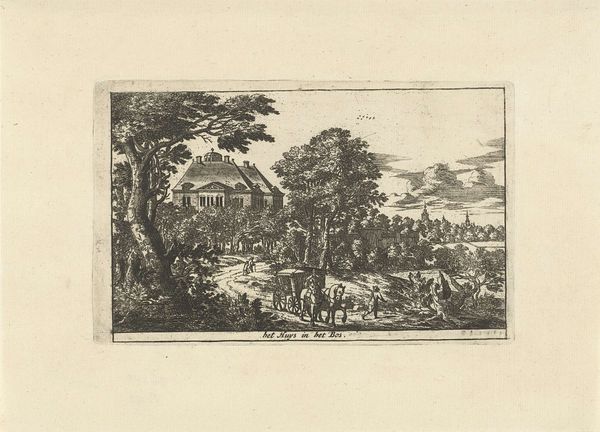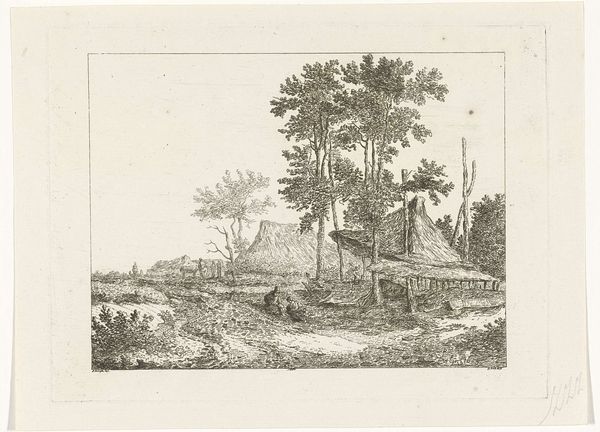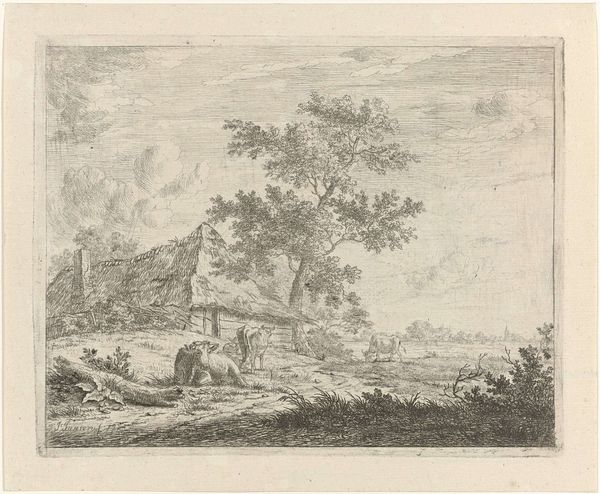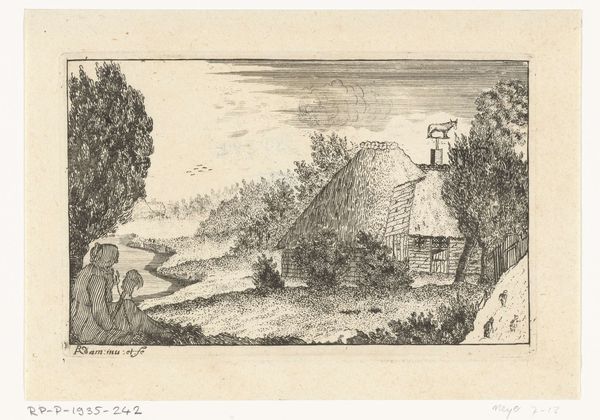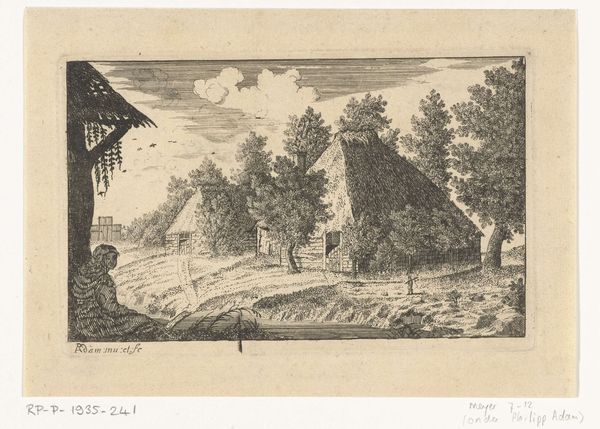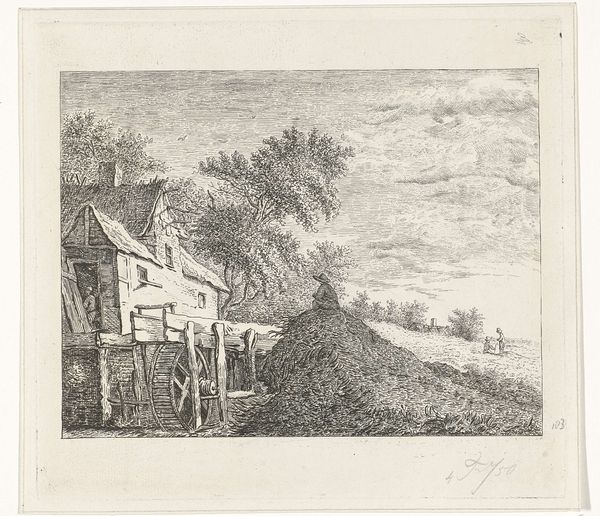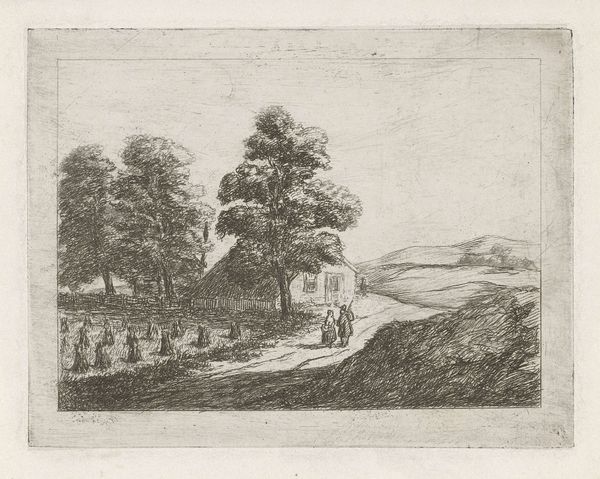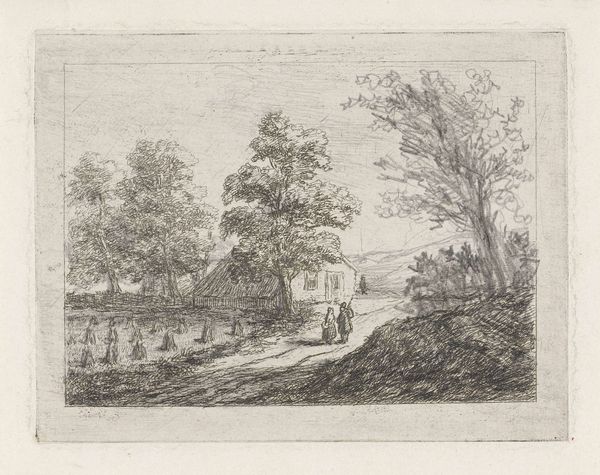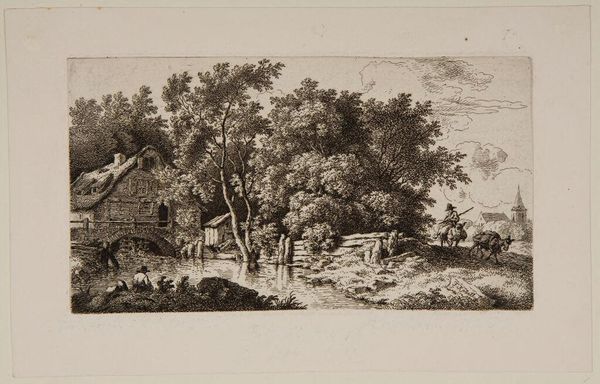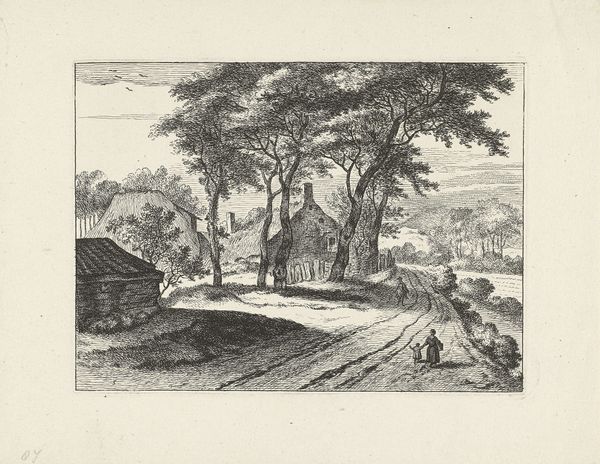
print, etching
# print
#
etching
#
landscape
#
realism
Dimensions: height 98 mm, width 150 mm
Copyright: Rijks Museum: Open Domain
Curator: This print is titled "Man bij een boerderij," which translates to "Man at a Farm," created by Joseph Hartogensis in 1856. The medium is etching, a type of printmaking that captures a sense of spontaneity. Editor: My first impression is the overall delicacy of the etching; there is a quiet stillness. The composition has an appealing tonal contrast—light and shadow—with many finely drawn details that make the landscape feel quite spacious. Curator: I'm drawn to how this piece depicts rural life in the Netherlands during that period. We can consider this print as an illustration of agrarian labor and its place within society, but also more broadly, a meditation on the relationship of human activity and its connection to our surrounding landscape. Consider how industrialization and urbanization transformed how labor systems function. It's crucial to study it through the lens of socio-economic changes in the nineteenth century. Editor: True, and yet Hartogensis creates depth masterfully. His arrangement of visual elements, particularly the receding lines of the fences, contributes to this effect, and these orthogonal lines provide structure for the image. Consider the figure—is the composition centered, unbalanced, or perfectly situated? Also, observe how the artist utilizes the linear strokes in the etching to depict light, clouds, and shadow; his choices contribute greatly to the overall mood. Curator: And looking at that lone figure on the road offers a visual focal point, but what I see are many narratives. This piece, like many works from that era, seems to invite questions about social class, access to resources, and who could have the opportunity to traverse and live within certain landscapes. What does the act of documenting farmland accomplish when the lives of farm workers went unacknowledged? Editor: An excellent question. Now that I reflect on it, I wonder about Hartogensis' treatment of texture through these complex linear patterns; these are visual features of significance as well. It may seem understated, but if you look closely you see his choices reveal complex design decisions. Curator: Right, so even in what seems to be a very simple, peaceful landscape, there's a rich social commentary waiting to be uncovered. The image is not only about representing a scene, but also an examination of human involvement in the natural environment and social forces at work in shaping that environment. Editor: I’m starting to see how an analysis of form can indeed benefit from integrating socio-historical context and identity in art, something you’ve pointed out. A compelling interpretation, indeed.
Comments
No comments
Be the first to comment and join the conversation on the ultimate creative platform.
